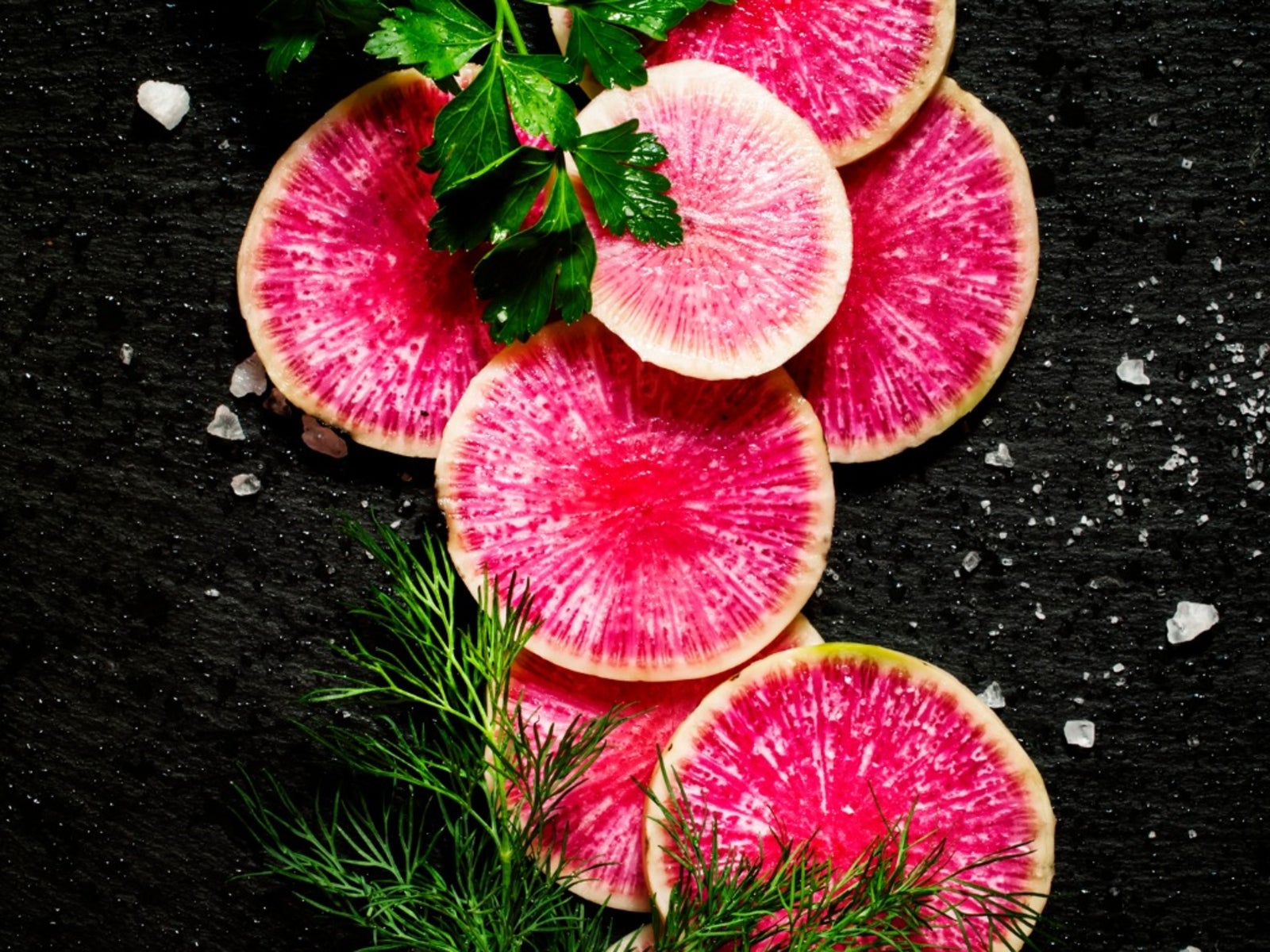Watermelon Radish Facts: Tips For Growing Watermelon Radishes

Radishes are cool weather veggies available in a variety of sizes and colors that vary in flavor as well. One such varietal, the watermelon radish, is a creamy white specimen and green underneath with a striated pink interior looking much akin to a watermelon. So, what is a watermelon radish? What do watermelon radishes taste like and what other watermelon radish facts might entice us into growing them? Let’s find out.
What is a Watermelon Radish?
Watermelon radishes are an heirloom variety of Daikon radish, one of my favorites. They are a member of the mustard family, which includes arugula and turnip. An interesting watermelon radish fact tells us that the Chinese word for these radishes is ShinRi-Mei, meaning “beauty in the heart.” One only needs to slice into one of these beauties to understand the meaning behind the name. Their Latin name is Raphanus sativus acanthiformis. As to what watermelon radishes taste like, they have a milder, understated taste compared to their brethren and are a bit less peppery in flavor. Unlike other varieties, the flavor actually mellows even further the more mature the radishes become.
Growing Watermelon Radishes
Since these are an heirloom variety, finding watermelon radish seeds might require a bit more of a search than going to the local five and dime but are well worth the effort. Watermelon radish seeds are easy to order through online seed catalogs. Growing watermelon radishes is as easy as growing other radish types. They do take longer to mature than other varieties, however – about 65 days. Plant them from early to late spring. They can be planted anew every two weeks for a continuous harvest. Radishes thrive in well-drained, fertile, deep, sandy soil rich in organic matter. Prior to sowing watermelon radish seeds, you may want to amend the soil with 2 to 4 inches (5-10 cm.) of well composted organic matter and 2 to 4 cups (0.5-1 L.) of all-purpose fertilizer (16-16-8 or 10-10-10-) per 100 square feet (9.29 sq. m.), especially if your soil tends to be heavy. Work these into the top 6 inches (15 cm.) of soil. Radish seeds can be sown directly into the garden when soil temps are 40 degrees F. (4 C.) but germinate best at 55 to 75 degrees F. (12-23 C.). Sow seeds in rich soil, evenly spaced in rows 6 inches (15 cm.) apart at a depth of ½ inch (1 cm.). Tamp the soil down lightly and water the seeds in. Maintain consistent irrigation as the radishes grow. When the seedlings are an inch (2.5 cm.) tall, thin them to 2 inches (5 cm.) apart.
Gardening tips, videos, info and more delivered right to your inbox!
Sign up for the Gardening Know How newsletter today and receive a free copy of our e-book "How to Grow Delicious Tomatoes".

Amy Grant has been gardening for 30 years and writing for 15. A professional chef and caterer, Amy's area of expertise is culinary gardening.
-
 Looking For Plants To Give You The Soft And Fuzzies? Try These 5 Fuzzy Leaf Plant Options
Looking For Plants To Give You The Soft And Fuzzies? Try These 5 Fuzzy Leaf Plant OptionsLovers of texture, drama, silver foliage and tactile plants will adore these special sensory garden additions. These fuzzy leaf plant options will leave you all aglow
By Susan Albert
-
 Get Ready For A Summer Of Hummers! Grow These Full Sun Hummingbird Plants and Flowers
Get Ready For A Summer Of Hummers! Grow These Full Sun Hummingbird Plants and FlowersIf you’re lucky enough to enjoy a sunny backyard, make sure you are maxing out on your pollinator opportunities and grow these full sun hummingbird plants and flowers
By Tonya Barnett